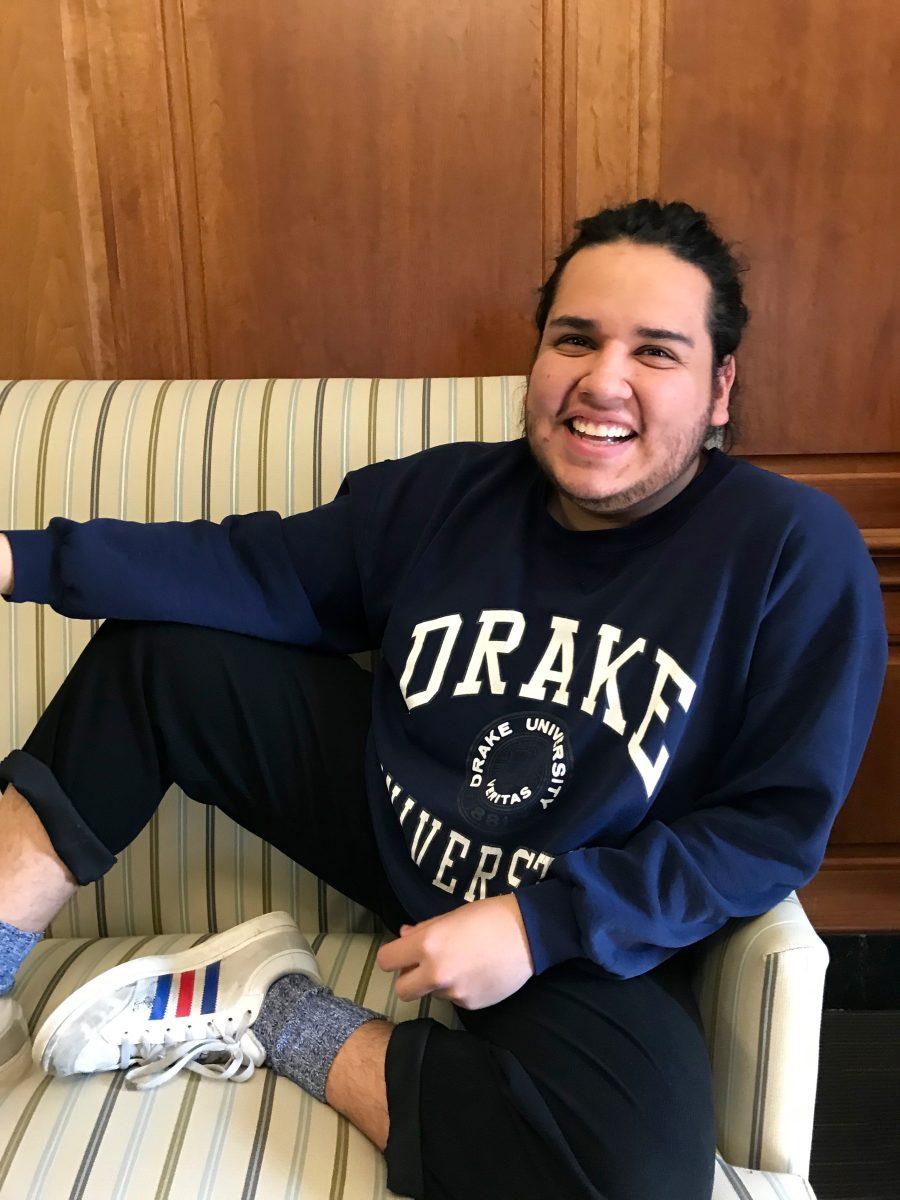Highlighting the stories of Drake students and faculty
Someday, you may see junior Alex Peralta-Cornejo’s name on the cover of a book titled, “How I Learned Not to be White.” It’s still a work in progress, but his whole life up until this point has informed much of the meat of the novel.
Peralta-Cornejo just began his enrollment at Drake in the fall of 2017, which wasn’t necessarily planned.
Peralta-Cornejo and his family immigrated to America from Quito, Ecuador when he was six years old, and they lived in the suburbs of Chicago for much of his childhood. There he was surrounded by a diverse mix of races, and that significantly impacted his initial upbringing.
“You don’t really think about the socialization and about the self-reflection of race until you’re confronted with it,” Peralta-Cornejo said. “Within my community, I did have some advantage because I’m not super brown, as you can see, and I was a little bit whiter when I was a kid.”
But when his family moved to Waukee, Iowa when he was a fifth-grader, he was suddenly one of very few minority students in a sea of white. That was shocking for him. He found himself suddenly becoming the “other” for the first time in his life, and discrimination and racial slurs from other students rendered his skin color more visible than ever.
His fear of rejection, he says, changed the way he began to present himself.
“I definitely tried to assimilate, hardcore,” Peralta-Cornejo said. “Because when I came from Chicago, I had an accent. I had more of a Mexican/Latino accent just because Spanish is my first language … I lost that accent on purpose.”
He also mentioned consciously feeling like he was tokenizing himself—as an immigrant, a Latinx, and a person of color—in order to please the people surrounding him. Anything he could do to be the center of attention, whether that be a little salsa dance or teaching his white peers how to curse in Spanish, he did it. Like all young people, he simply wanted to fit in.
“I would try to validate myself as a human being, even though we’re all human beings, even those people who are undocumented,” Peralta-Cornejo said. “They’re here for some reason. I definitely had to learn how not to be white.”
After high school, he struggled to find his next step. He tried to follow his passion for photography at an art school in Chicago, but he soon realized his dream wasn’t financially feasible.
“I had been socialized with my white counterparts and I thought, at some point, that I was equal to them and that I could just maneuver through life like them, completely mystifying and dismissing my reality,” Peralta-Cornejo said.
After encouragement from his aunt, he enrolled in DMACC where he took his first sociology class. To put it simply, his life was changed. For the first time, he began to understand more deeply how race and gender are imbedded into the infrastructure of society. His multi-faceted identity began to make more sense.
His sociology major, he says, is almost entirely a result of his undying pursuit for self-identification.
“When I see myself in the mirror, I’m like, okay. Society says I have this white nose, you could say,” Peralta-Cornejo said. “But wait, I have brown skin. But wait, I have black hair … But genetically, I’m half-white. But also, I was socialized as a Latino, but also I’m a man, but also this is really confusing because I really like men. It’s constant.”
He’s still in pursuit of his answers and, perhaps, the ending of his book. For now, he describes his life by terms of music, an art form that is extremely important to him. In “La Vida es un Carnaval,” Celia Cruz sings, “Ay, no hay que llorar / Que la vida es un carnival / Y es más bello vivir cantando.
(There’s no need to cry, because life is a carnival. It’s more beautiful to live singing.)”







